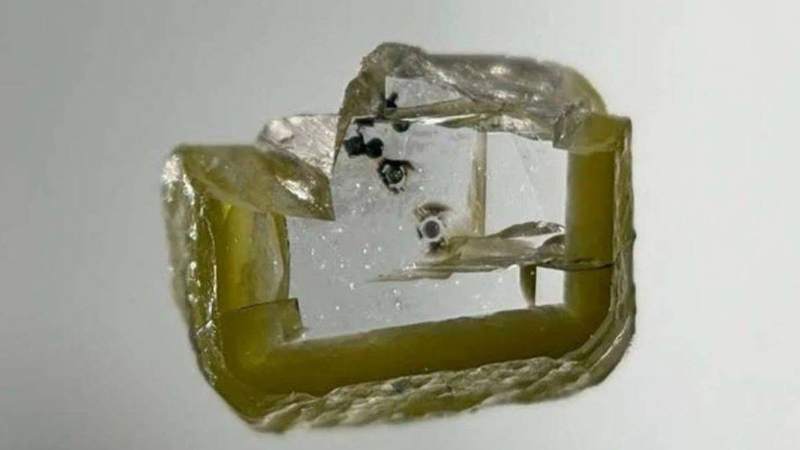A mineral species whose existence was predicted by scientists in 1967 but never seen before has been discovered in the world’s largest diamond mine. Mineral found trapped in a diamond, mined from 660 km deep in the Orapa mine in Botswana.davemaoit‘ was named.
An ancient diamond found in Botswana, located in the south of Africa, has been announced to contain a mineral that has never been seen before and comes from the depths of the Earth.
It was stated that the diamond, which was extracted in the town of Orapa in Botswana, which is considered the largest diamond mine in the world, is about 4 millimeters wide and weighs 81 milligrams.
However, it was stated that the diamond in question was sold to a scientist working on precious stones at the California Institute of Technology in 1987. However, neither the seller nor the scientist realized how special the diamond was until now.
They discovered tiny crystal stuck inside the diamond
The diamond, which is now in the Los Angeles County Museum of Natural History in California, USA, was recently acquired by the University of Nevada. Oliver Tschauner analyzed by.
On the other hand, most diamonds are formed between 120 and 250 kilometers below the ground. More valuable diamonds, called super-deep, are formed in the Earth’s lower mantle, which begins 660 kilometers below the surface.
As part of the study, published in the journal Science, Tschauner and his colleagues looked at the Botswana diamond using X-rays and discovered tiny crystals of another mineral trapped inside. Using lasers to cut the diamond and remove these crystals, the researchers used a technique called mass spectrometry.
The tiny crystals turned out to be a form of calcium silicate that was theorized to exist in the lower mantle but had never been observed before.
The scientists explained that this particular chemical combination, which consists mainly of calcium, silicon and oxygen, can only form under extreme conditions experienced in the lower mantle, where the pressure is 200,000 times higher than that found on the Earth’s surface. Under surface conditions, calcium silicate typically exists as a white mineral with needle-like crystals called wollastonite.
Named after the famous scientist
Tschauner and colleagues, geologists at the Carnegie Institution for Science Ho-Kwang Dave Maoto the new calcium silicate mineral in honor of “davemaoit‘ he named it.
Normally, on the other hand, davemaoid’s crystal structure would break apart if it were brought to the Earth’s surface due to the large drop in pressure. However, it was preserved throughout the long history of the Orapa mine, which probably dates back 1.5 billion years, as it was trapped inside a hard diamond.
–


